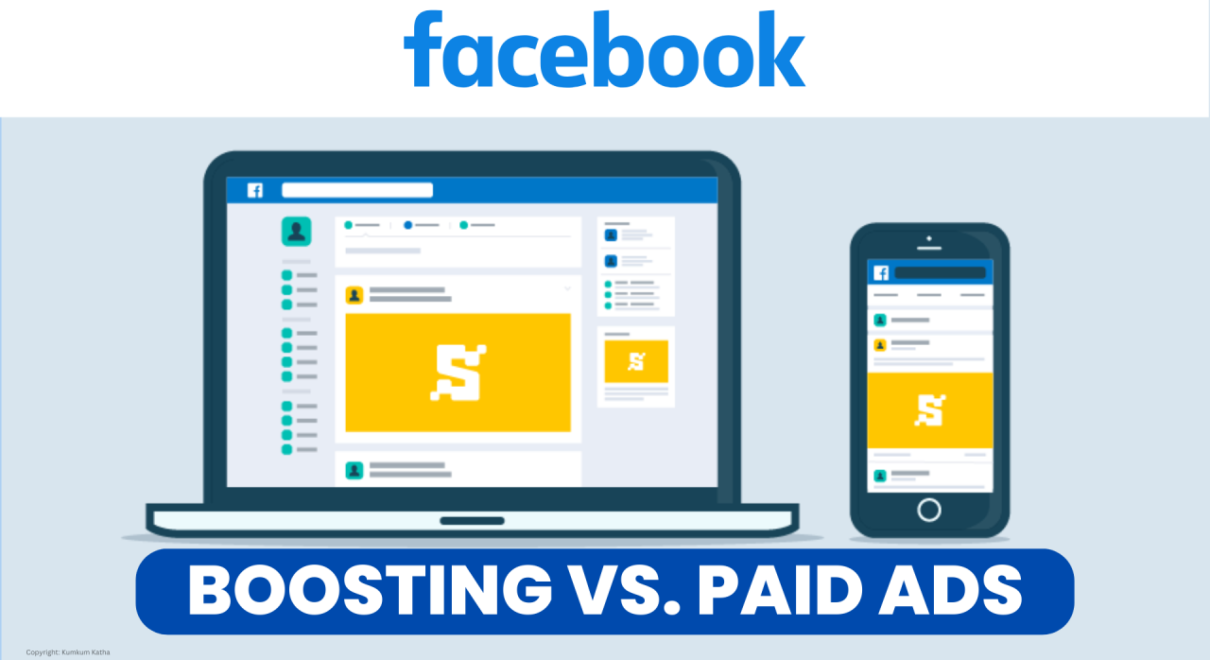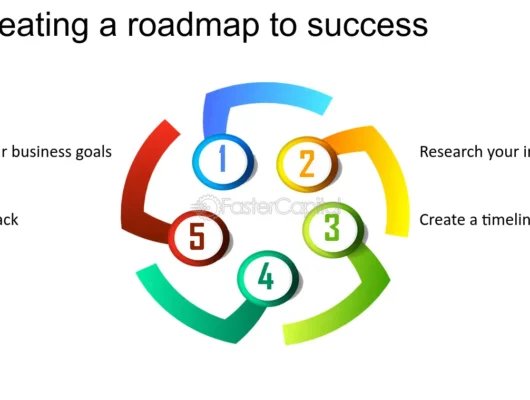When it comes to promoting your business on Facebook, you have two primary options: Facebook Ads and Boosted Posts. Both can increase your reach and engagement, but they serve different purposes and offer varying levels of control and customization.
In this article, we’ll break down the differences between Facebook Ads and Boosted Posts to help you decide which option is best suited for your marketing goals.
1. Understanding Facebook Ads
- What Are Facebook Ads? Facebook Ads are highly customizable advertising campaigns created and managed through Facebook’s Ads Manager. They allow you to target specific audiences, choose from a variety of ad formats, and optimize for different objectives like conversions, traffic, or brand awareness.
- Key Features:
- Advanced Targeting: Facebook Ads offer detailed targeting options, including demographics, interests, behaviors, and custom audiences.
- Multiple Ad Formats: Choose from image ads, video ads, carousel ads, slideshow ads, and more.
- Custom Objectives: You can set specific objectives such as lead generation, website traffic, or app installs.
- Detailed Analytics: Access in-depth analytics and performance metrics to optimize your campaigns.
2. What Are Boosted Posts?
- What Are Boosted Posts? Boosted Posts are a simplified form of Facebook advertising. When you boost a post, you’re essentially paying to increase the visibility of a post that you’ve already published on your Facebook Page. Boosting a post is a quick way to promote content to a broader audience without needing to dive into the complexities of Ads Manager.
- Key Features:
- Ease of Use: Boosting a post is straightforward and can be done directly from your Facebook Page with just a few clicks.
- Limited Targeting Options: While you can choose basic targeting options like location, age, and interests, Boosted Posts don’t offer the same level of precision as Facebook Ads.
- Simple Objectives: You can choose from three primary goals: getting more engagement (likes, comments, shares), promoting your Page, or driving traffic to your website.
- Budget Flexibility: Set your budget and duration, and Facebook will estimate the potential reach based on your selections.
3. Comparing Costs: Facebook Ads vs. Boosted Posts
- Budget Control:
- Facebook Ads: You have full control over your budget with options to set daily or lifetime budgets. You can also choose bidding strategies that suit your campaign objectives, such as cost-per-click (CPC) or cost-per-impression (CPM).
- Boosted Posts: You set a fixed budget for the duration of the boost. While this is simple, it offers less flexibility in terms of optimizing spend based on performance.
- Cost Effectiveness:
- Facebook Ads: Generally more cost-effective if you have clear objectives and need advanced targeting. The ability to optimize for specific actions (like conversions) often results in better ROI.
- Boosted Posts: Suitable for small budgets or when you need a quick and easy way to increase the visibility of a post. However, the lack of detailed targeting and optimization can lead to less efficient spending.
4. Targeting Capabilities: Which Option Gives You More Control?
- Facebook Ads:
- Advanced Targeting: Facebook Ads allow you to create highly specific audiences based on demographics, interests, behaviors, and even past interactions with your business. You can also create custom and lookalike audiences, giving you the ability to reach people who are most likely to convert.
- Retargeting: Facebook Ads allow you to retarget users who have previously visited your website, interacted with your app, or engaged with your content.
- Boosted Posts:
- Basic Targeting: While you can target users based on location, age, and interests, the options are more limited. Boosted Posts are better suited for broad audience targeting rather than precision marketing.
- No Retargeting: Boosted Posts don’t offer retargeting options, which limits your ability to re-engage with people who have shown interest in your business.
5. Objectives and Goals: When to Use Each Option
- When to Use Facebook Ads:
- Clear Marketing Objectives: If you have specific goals, such as driving conversions, generating leads, or increasing app installs, Facebook Ads are the better choice.
- Complex Campaigns: If your campaign requires multiple ad variations, A/B testing, or in-depth analytics, Facebook Ads provide the tools you need.
- Precise Audience Targeting: When reaching a very specific audience is crucial, Facebook Ads’ advanced targeting options make it possible.
- When to Use Boosted Posts:
- Increase Engagement: If your primary goal is to increase engagement on a particular post (likes, comments, shares), boosting a post is a quick and effective solution.
- Promote Time-Sensitive Content: For promoting events, sales, or special announcements, Boosted Posts can help you quickly get the word out to a broader audience.
- Simplify the Process: If you’re new to Facebook advertising or want to avoid the complexities of Ads Manager, Boosted Posts are user-friendly and easy to set up.
6. Analytics and Optimization: Tracking Performance
- Facebook Ads:
- In-Depth Analytics: Facebook Ads Manager provides comprehensive analytics, allowing you to track performance metrics such as CTR, conversion rate, and ROI. This data is crucial for optimizing campaigns and making informed decisions.
- A/B Testing: You can conduct split tests to compare different ad variations and optimize for the best performance.
- Boosted Posts:
- Basic Insights: While you can track engagement metrics like reach, likes, and comments, Boosted Posts don’t offer the same level of detailed analytics as Facebook Ads. Optimization options are also limited, meaning you have less control over improving performance based on data.
7. Which One Should You Choose?
- Choose Facebook Ads If:
- You need to achieve specific business objectives (e.g., conversions, leads).
- You want to target a highly specific audience.
- You’re running complex campaigns with multiple ad formats and variations.
- You require detailed analytics and optimization tools.
- Choose Boosted Posts If:
- You want to quickly increase the visibility of a post without diving into advanced settings.
- Your goal is to boost engagement or promote time-sensitive content.
- You’re working with a smaller budget or are new to Facebook advertising.
Conclusion
Both Facebook Ads and Boosted Posts have their place in a comprehensive social media marketing strategy. The key is to understand the strengths and limitations of each option and choose the one that aligns best with your goals.
Facebook Ads offer more control, customization, and optimization, making them ideal for businesses with specific objectives and larger campaigns.
On the other hand, Boosted Posts are perfect for quickly amplifying your content and reaching a broader audience with minimal effort.






